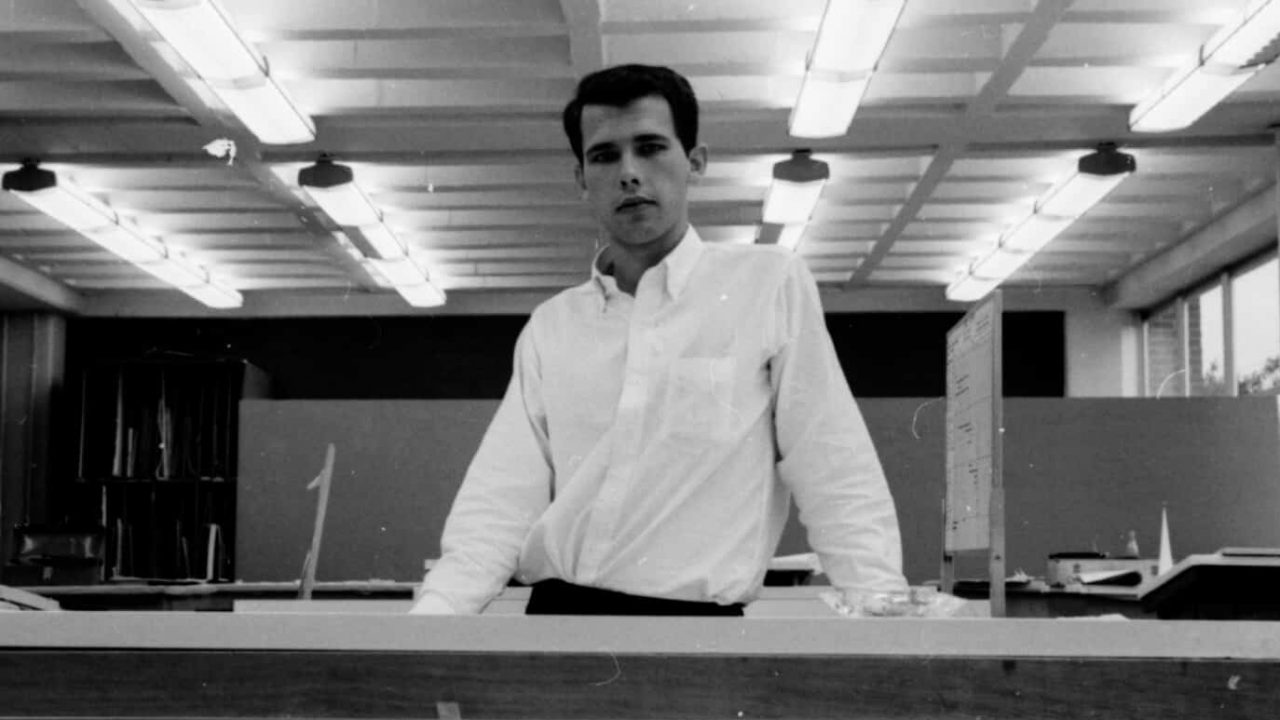This is Service: David Stoddard ’63

The School of Industrial + Graphic Design Advisory Council recently celebrated industrial design graduate David Stoddard’s thirty-one years of service at its fall meeting with a dinner in his honor. His service has included being the guest lecturer at Design Interaction twice (1986 and 1993) and a class lecturer on “Professional Practice” both at Auburn and at Georgia Tech. He also has been an invited juror at the IDSA Student Merit Awards Portfolio Review at Auburn and Georgia Tech. The Department of Industrial Design awarded him its Distinguished Service Award 2001–2002.
More about Dave Stoddard
Auburn had just officially been designated Auburn University when Dave Stoddard transferred here. After studying engineering and architecture at Arlington State (now University Texas, Arlington), he entered in the Auburn’s industrial design program in 1961. Born in Bridgeport, Connecticut, Dave grew up in Arlington, Texas in a creative family. His father was an architect by education and worked his entire career in aircraft design, and his mother was an artist.
He credits his Auburn education for giving him the skills and processes to realize that obstacles can usually be surmounted by planning and execution, perseverance, force of will and sometimes good fortune. This training has served him well through his U.S. Army service and his 53-year professional career. He holds thirty-one patents and ten POP Outstanding Merchandising Award, including International Display of the Year (1995).
Dave graciously answered questions about his career and Auburn experience.
Is there a person or people at Auburn who helped advance your career?
Besides my creative family, Professor Walter Schaer and Professor Eva Pheil were instrumental in my education. Another person who was a great influence was Dean James Foy, but we are drifting towards the confessional. I’ve been exceptionally lucky in some of my employment opportunities; mentors and colleagues abound. And many have passed on to their reward.
I was also lucky enough to share 50 years of marriage with the girl of my dreams, Shari, now departed, who attended Auburn in 1961 and University of Georgia extension, now Kennesaw State. Shari was an artist, interior designer, and architectural renderer. Our son David, also on the Advisory Council, is a frequent sounding board for projects and systems.
What project or accomplishment do you consider to be the most significant in your career?
In the 53 years of my career, many projects stand out, but notable were some 2,000 projects (not an exaggeration) for the Coca Cola Company, as well as 7-Eleven, and many major retailers. In 1995 a project for the Coca Cola Japan Company was chosen as International Display of the Year by the Point of Purchase Advertising Institute (POPAI). I also have been awarded 33 patents.
What is the most innovative design you’ve created?
I can’t pinpoint one most innovative design, and credit must be given to clients, contributors in marketing, purchasing and production and fellow designers who add criteria, suggestions or pose a question that leads to innovative solutions.
What are you working on now?
I have currently designed a merchandising system for the Convenience Store Industry, which is being developed by close colleagues Dane Seibert and John Sgrignoli of Performance Display Group. That invention was recently patented.
How has Auburn’s industrial design program changed over the years?
In the Biggin Hall basement in 1961, ’62, and ’63 strict attention was paid to methodology, and regimentation in the studio. All drawing tables (designed by Dean William Spear, who had also taught Industrial Design) were aligned with a string and located directly under the ceiling lighting fixtures. The shop was student maintained, and an orderly non-cluttered environment was adhered to. Large projects were carefully contained with everyone respecting the investment each student had made in materials.
There was excellent cooperation with the Industrial Labs with its advanced Wood shop, Machine Tool Lab, Foundry, and Sheet Metal Lab. Dr. Haynes and professors were invited jury members. Struggles for professional recognition were every day, the IDSA was for the elite. Even forming an IDSA chapter in Atlanta in the early 1960s was a considerable effort. Auburn enjoys a well-earned reputation. And by the way, my thesis was printed on a new machine in the library. It was called a Xerox.
The technological advancements, the computer revolution, are now part of each students’ portfolio and bag of tricks, in large part due to NASA, technology developed for the Space program, and giant leaps in manufacturing technology.
What has been your favorite part about serving on the SIGD advisory board?
I have enjoyed my colleagues, the faculty and staff and especially the interaction with students. Sometimes the message from professionals is not fully understood, but hopefully something will click later on. The individual portfolio reviews were always meaningful and rewarding, as well as being a platform for recruitment. I appreciate a student seeking further information and hope that I may offer some enlightenment.
Design can be a costly endeavor for companies, and even more costly if competent designers aren’t on board. A small invention or a well-thought out project can change a company’s total future with a paradigm shift. And Auburn’s SIGD prepares for those opportunities and challenges.
“The continuity and breadth of interest David CF Stoddard has invested in the Industrial Design program, now the School of Industrial and Graphic Design, brings substance and credibility to his insight and current participation in the council,” says Clark Lundell, Head of the School of Industrial and Graphic Design. “His passion for both the school and Auburn is a legacy carried on by his son.”
See more in:
Accolades,
Alumni,
Service Learning
Related people:
Clark Lundell